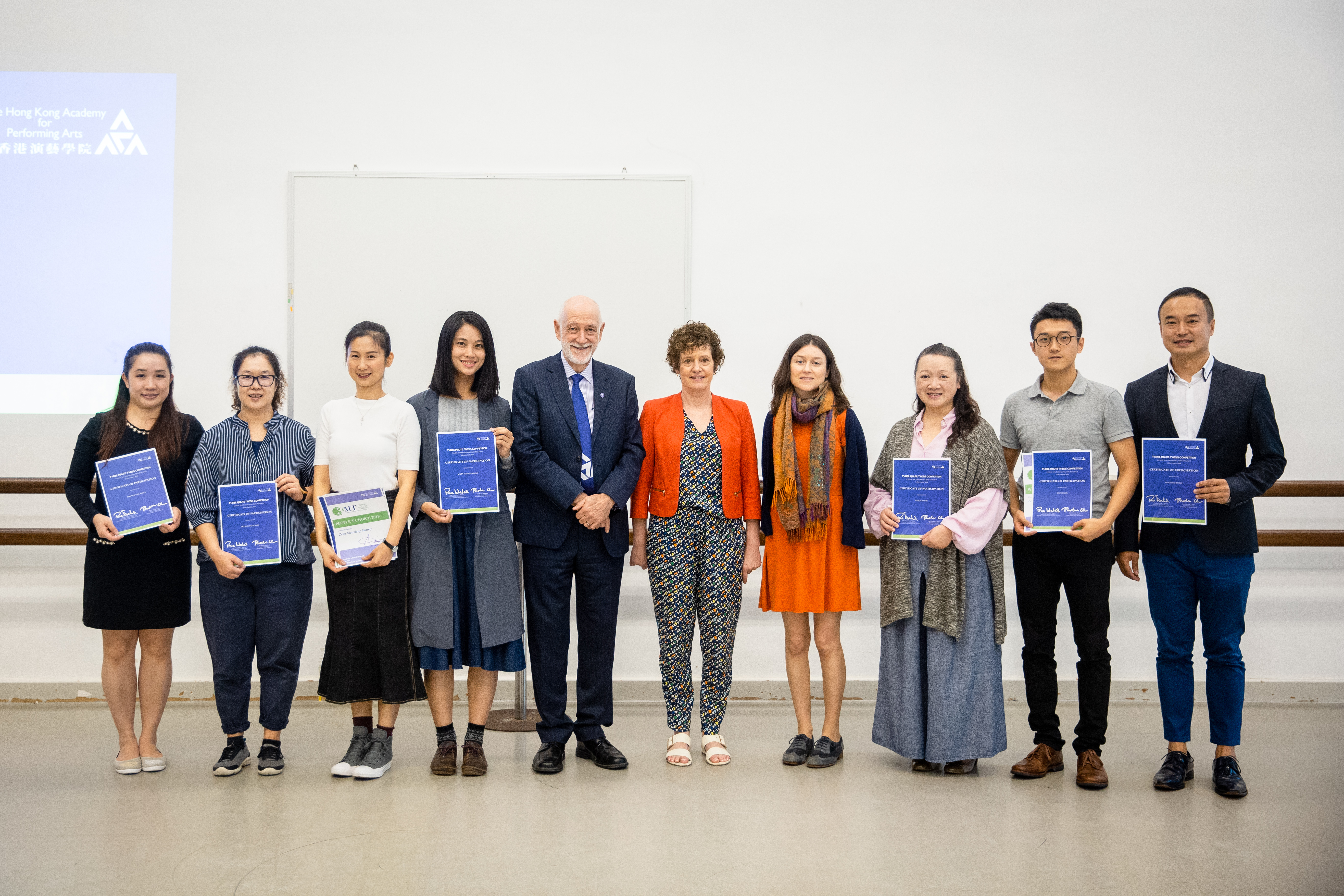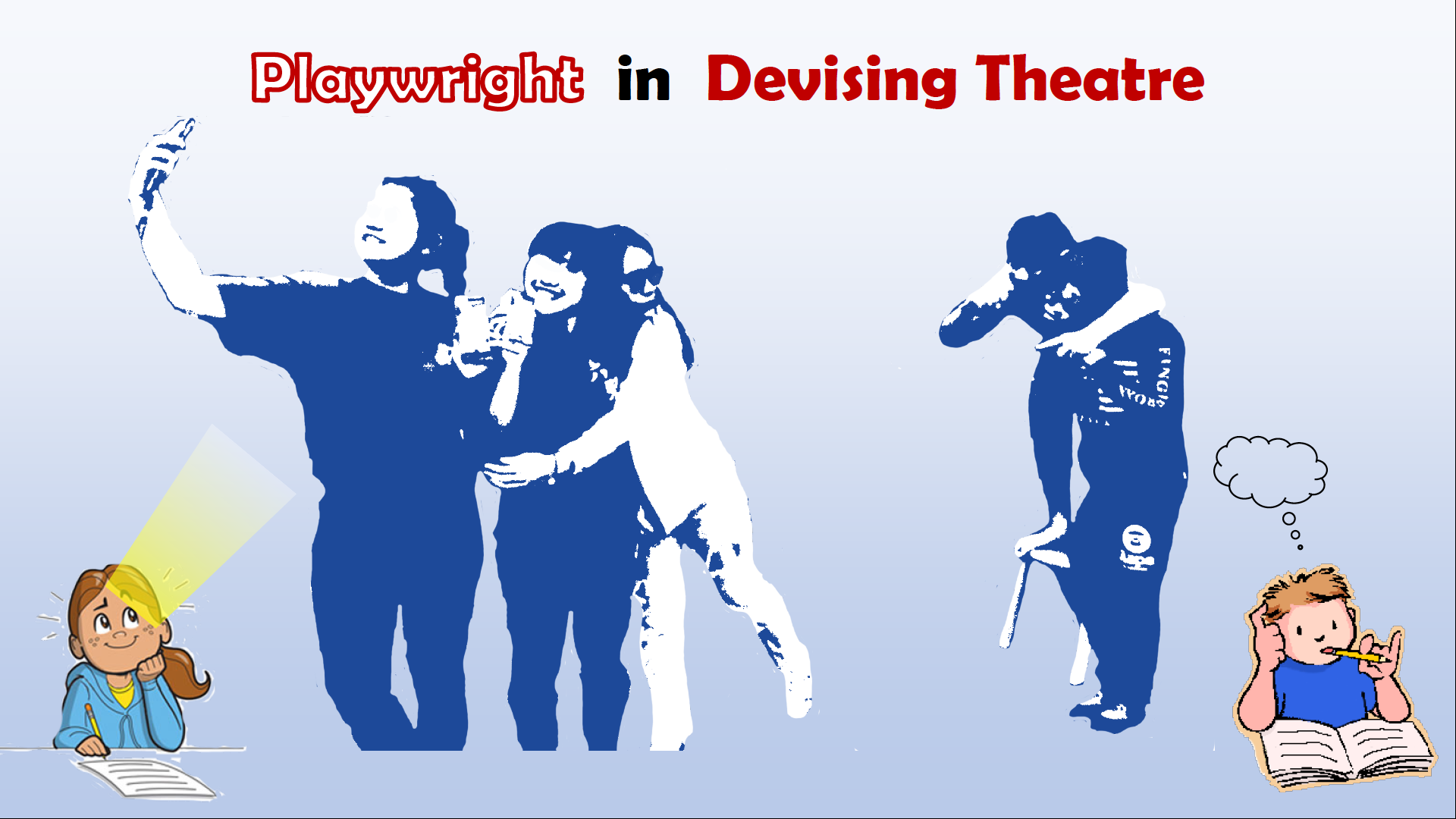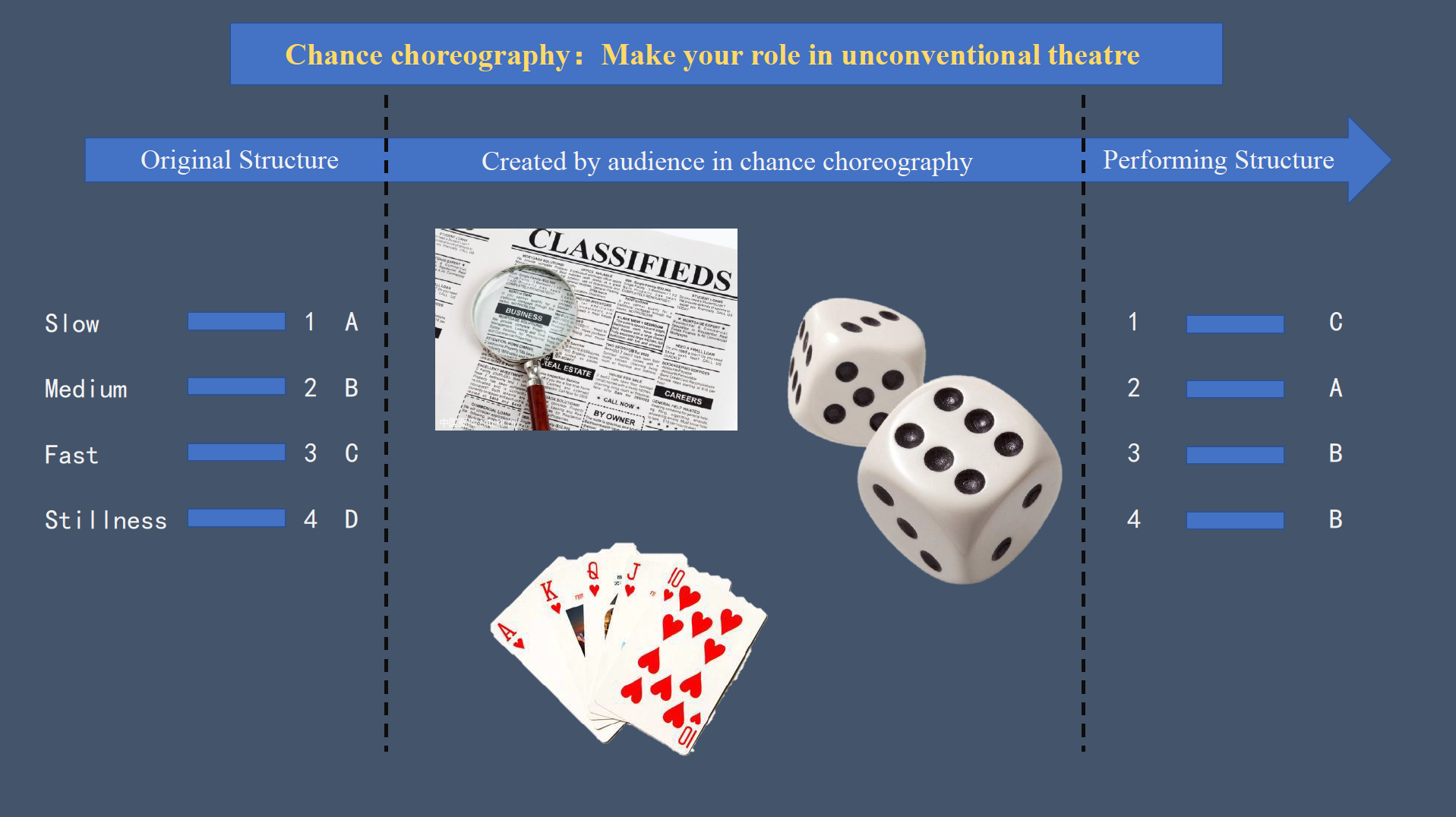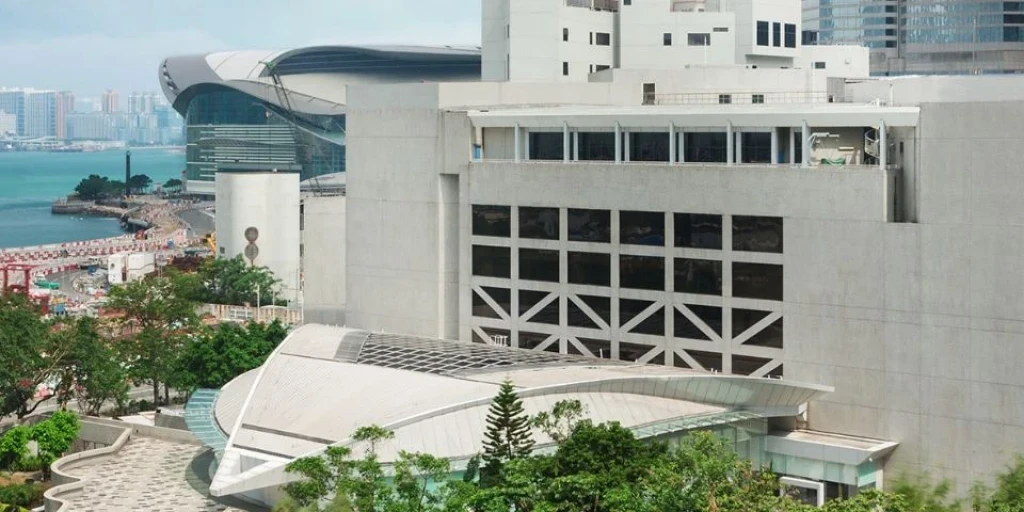The Academy's first Three Minute Thesis Competition took place on 5 December 2018 as part of HKAPA's Practice-as-Research Professional Development Event.
Below were our participants and adjudicators.

The Winners' Presentations
The winners have granted us their permissions to share the videos of their live presentations, their one-page slides and their speeches delivered in the competition.
The Winner
LEE, Wai Lok Eric
Click here to view the video.


THE ROLE OF PLAYWRIGHT IN DEVISING THEATRE
How do you think of a playwright when he is writing? Take a seat in Starbucks, look at the blue sky, smoking a cigarette, and write a play like Romeo and Juliet? Oh how romantic! Let me show you other things. These are photos taken by me in a devising exercise. I made some modifications so that you cannot recognize the actors. They were asked to present a problem they encountered in daily life through making a still image. What can you see? What is she holding? What is that guy telling the boy? And why does the girl in the middle look so scared? What is the story behind and how do you feel? We will come back to the photo later.
Yes, most playwrights work alone. They write by their experience of life, by their imagination, by sources from literature, media…you can name them. Most of the master pieces are individual works, but is it the only way? Is a playwright doomed to be a lonely freak? I don’t think so. In my practice-as-research project, I am a playwright in devising theatre, that means the director devises the piece with his actors. The photo is one of the examples. They started from a still image, and they developed their own story which was close to them: a boy’s mother is alcoholic, his classmates make fun of him, and he is isolated for a long period of time, finally, he goes on a road of no return. They devised a story about isolation. Ok, then you may have a concern now. Hey the story is devised by the actors, then what is the function of you as a playwright? This is my research.
What can a playwright do in a devising theatre except only recording actors’ actions? What kind of input you can make in the devising process? What are the differences between the traditional and the devising playwright? I cannot give you a conclusion right now because I just started my research. But I can show you some examples that I am doing now. I go into the exercise and play with the actors. And I even displaced the characters with them and made some suggestions in the still image. We discussed. I listened to the stories from them and they listened to mine. We collaborated, we understood each other, we inspired each other. I am not only recording or jotting notes, but I was being with them. So, I think out of my box, out of my experience and out of my imagination. I am not the first playwright who has done it, but every playwright may have his or her own way and each of them must have something different from the others…no matter he or she succeeded or failed. And this is the point of practice-as-research. Thank you!
The People's Choice Award and the Runner-up
ZENG, Xiao Xiang Sammy
Click here to view the video.

CHANCE CHOREOGRAPHY: MAKE YOUR ROLE IN UNCONVENTIONAL THEATRE
Imagine you are in an unconventional theatre event. There is no stage and no seat. You could be in a room of a hotel or an abandoned factory building, or an office. And you don’t know whether the person walking around you is a performer or an audience member. The notice in the entrance just asks you to feel relaxed and take a position wherever you want. Are you curious about what is going on? And what can you do? Then lights turn on and music comes up. The person in front of you starts to dance, maybe she or he then holds your hand and give you two poker cards and ask you to make a choice. And isn’t it fantastic for you to take part in such a theatre event?
In a modern society, unconventional dance theatre becomes more and more popular. Audience members are not only observers but also participants in theatre, in a performance process. How does a piece of choreography present its intention? And how to create a link between audience and performers are the starting points of my research. During the process of researching and exploring, I have found that “Chance Choreography” can be used as a theory to support my research. “Chance Choreography” is about using the rolling of dice, cutting of newspaper and other methods with uncertain results to make artistic choices. Maybe I can give you an example: a choreographer created 4 dance phrases in an original order ABCD, and the numbers 1234 representing different tempo, for example, 1 for slow, 2 for medium, 3 for fast, and 4 for stillness. And the audience members use the props in the space to generate some new number and letter combinations for the performance. Then the performers present a new order of the dance phrases to show the resulting piece. In this process, audience can see what is changed and how it changes.
In the traditional theatre, choreography is the choreographer’s work. But in my research, audience members need to complete the performance with the props they have been offered and they finish the work with the performers in the space. So, if you take part in my performance, just take your chance, and give me a chance. Thank you very much.

